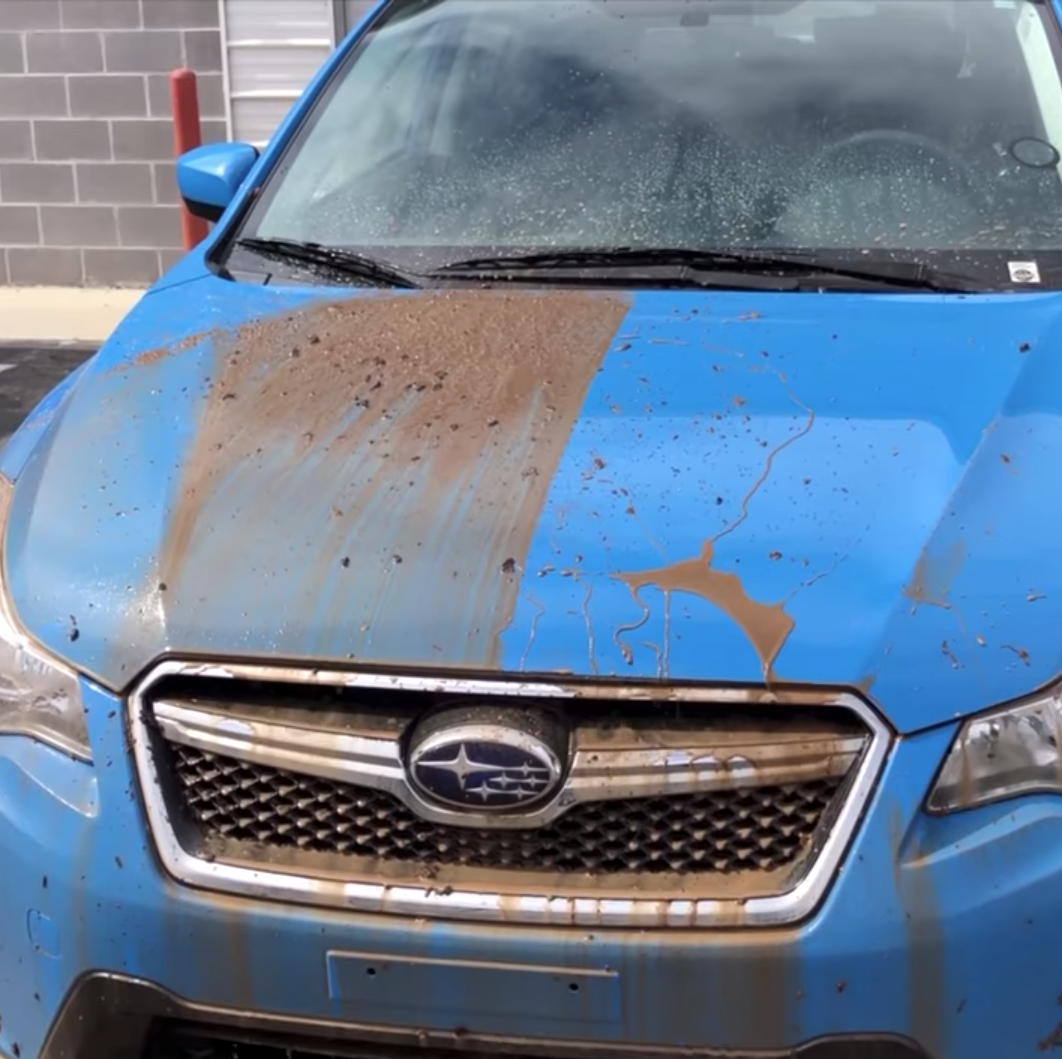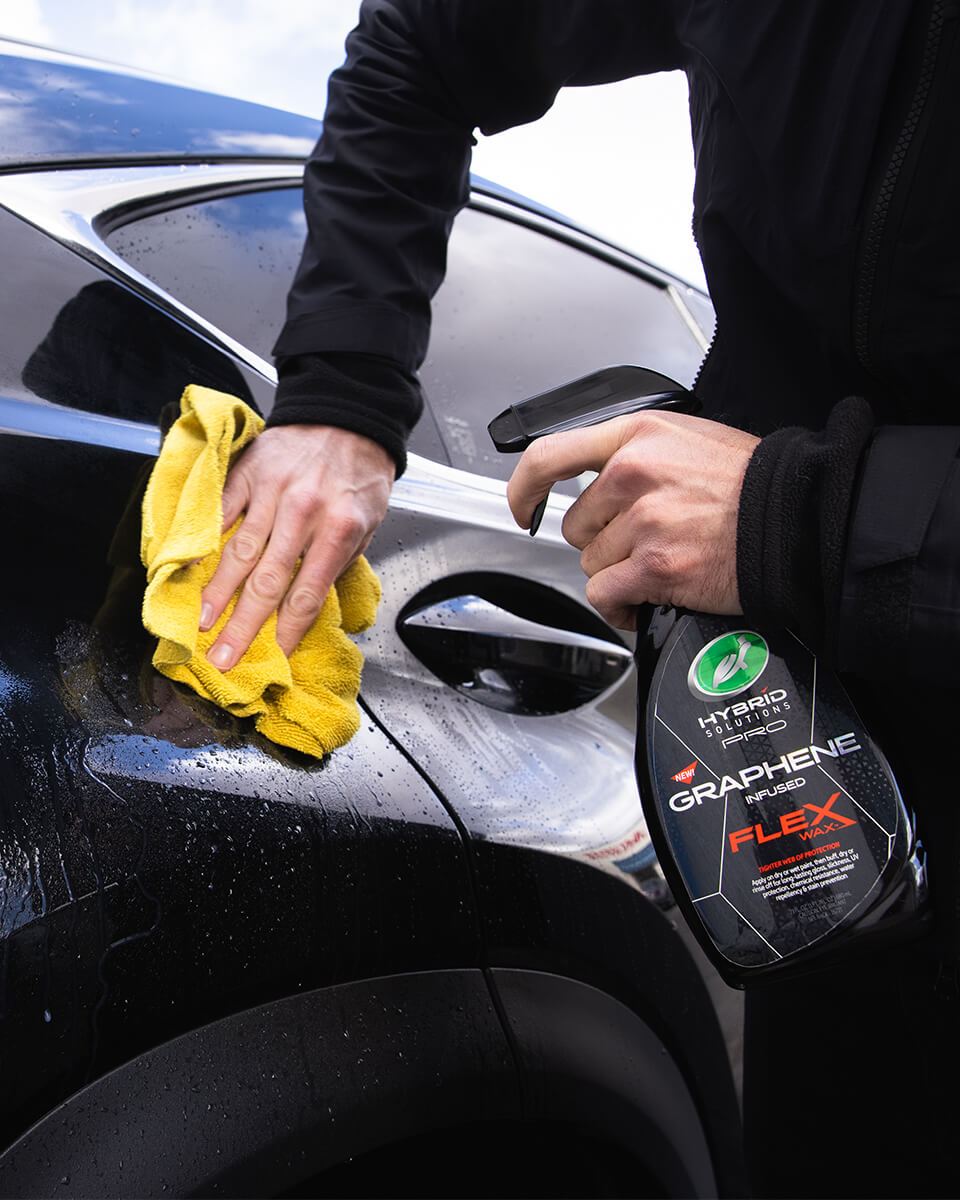Checking out the Scientific Research Behind Car Ceramic Coating and Its Safety Features
The science of car ceramic coating offers a fascinating study in innovative vehicle protection. Made up mainly of silicon dioxide and polymers, these layers form a robust bond with lorry paint. This interaction boosts longevity against ecological risks while offering hydrophobic benefits. Nevertheless, the intricacies of how these finishings work and their lasting benefits continue to be less recognized. Unloading these details reveals why ceramic coverings are becoming a preferred selection for lorry treatment
What Is Ceramic Coating?
Ceramic coating is a fluid polymer that chemically bonds to the surface of an automobile's paint. This advanced safety layer improves longevity and offers premium resistance to ecological aspects. Unlike standard wax or sealants, which give temporary defense, ceramic finishes produce a resilient guard that can endure harsh problems such as UV rays, acidic pollutants, and extreme climate. When used correctly, the coating develops a hydrophobic surface area, triggering water to bead and slide off, which aids in keeping the car's cleanliness. Furthermore, it supplies enhanced gloss and deepness to the paint, making the car show up even more polished and vivid. The application process generally involves extensive surface prep work, consisting of cleaning and sprucing up, to guarantee peak bonding. Therefore, ceramic layers are ending up being increasingly preferred among car lovers and those looking for to safeguard their financial investments, assuring to maintain the vehicle's aesthetic appeal while decreasing the frequency of maintenance.
The Composition of Ceramic Coatings
The complex formulation of ceramic layers largely contains silicon dioxide (SiO2), which is derived from natural resources like quartz and sand. This key part provides the structure for the coating's durability and protective high qualities. In enhancement to SiO2, ceramic finishings often consist of numerous polymers and ingredients that enhance bond, flexibility, and resistance to environmental factors. These compounds work synergistically to develop a robust barrier versus impurities such as dirt, chemicals, and UV rays.Furthermore, some solutions include titanium dioxide (TiO2) or various other nanomaterials, which can augment the coating's hydrophobic buildings, resulting in enhanced water repellency. The specific make-up can differ significantly among producers, influencing efficiency and long life. Inevitably, the mix of these aspects culminates in a safety layer that not just boosts the visual charm of automobiles however likewise serves to prolong their lifespan by shielding the surface area from possible damages.
Just How Ceramic Coatings Job
Understanding just how ceramic coverings work includes exploring their chemical composition, which adds to their safety top qualities. The application procedure is vital for accomplishing perfect results, while longevity and resilience factors establish the coating's efficiency gradually. Together, these elements highlight the advantages and performance of ceramic coverings for car security.
Chemical Make-up Explained
While lots of car proprietors seek resilient defense for their lorries, the chemical structure of ceramic coverings plays an essential role in their efficiency. These coverings mostly are composed of silicon dioxide (SiO2), which is stemmed from all-natural minerals. This compound creates a strong bond with the car's paint, creating a resilient, safety layer. In addition, several ceramic coverings include titanium dioxide (TiO2), improving their hydrophobic properties and resistance to UV rays. The visibility of polysiloxanes can better improve flexibility and sturdiness. Together, these elements add to the coating's capability to fend off water, dirt, and pollutants, while likewise giving a high-gloss finish. Comprehending this chemical structure aids car proprietors value the durable defense supplied by ceramic coatings.
Application Refine Review
Applying ceramic layers involves a meticulous process that guarantees perfect bonding and defense for the vehicle's surface. Thorough cleaning and purification of the car's exterior are carried out to remove dirt, grime, and previous waxes. This action verifies that the surface area is complimentary from contaminations that can hinder attachment. Following this, the paint is usually polished to boost clarity and remove any type of flaws. Once prepared, the ceramic coating is applied in little areas making use of an applicator pad, permitting consistent insurance coverage. The coating is then delegated treat, forming a solid chemical bond with the surface. Correct treating times and problems are crucial, as they validate the coating attains its maximum performance and protective top qualities.
Longevity and Durability Elements
Ceramic finishes are designed to supply durable protection via their sophisticated chemical make-up, which develops a durable obstacle versus ecological try this website contaminants. The resilience of these coverings is influenced by aspects such as the thickness of the application, the quality of the item, and the conditions under which the automobile is subjected. Top notch ceramic layers can last several years, withstanding scratches, UV rays, and chemical discolorations. Appropriate maintenance, including regular cleaning and routine reapplication, can further improve durability. Additionally, environmental variables like climate and exposure to toxins can influence the life-span of the coating. Generally, when used and maintained correctly, ceramic go to this site finishes use phenomenal resilience, making them a prominent option for car fanatics seeking to preserve their car's appearance.
Hydrophobic Properties and Water Repellency
Hydrophobic properties are a hallmark of quality car ceramic coatings, considerably enhancing the lorry's surface performance. These finishings develop a molecular bond with the car's paint, causing a surface that wards off water successfully. When water enters into contact with a ceramic-coated surface, it beads up and rolls off, minimizing the quantity of fluid that stays on the paint. This habits not just contributes to an aesthetically pleasing look however also reduces the buildup of pollutants such as dirt, grime, and road salts.The boosted water repellency causes simpler cleansing and upkeep, as much less initiative is needed to eliminate undesirable materials. Furthermore, the hydrophobic nature of ceramic finishings helps in avoiding water areas, which can mar the surface of uncoated surfaces. Overall, the incorporation of hydrophobic buildings in ceramic coatings plays an important role in maintaining the vehicle's immaculate look while simplifying upkeep.
Defense Versus Scratches and UV Damage
Car ceramic finishings provide significant defense versus scrapes and UV damage. The scrape resistance system produces a sturdy layer that soaks up effects, while the UV shielding advantages aid preserve the automobile's paint integrity in time. Together, these features contribute to a longer-lasting and aesthetically attractive finish.
Damage Resistance System
Utilizing sophisticated modern technology, ceramic coatings give a durable shield versus scratches and UV damages, boosting the durability and look of vehicle surfaces. The scratch resistance system of these finishes is attributed to their one-of-a-kind molecular structure, which creates a resilient bond with the vehicle's paint. This bond produces a hard, protective layer that can soak up effects and stand up to abrasions. Additionally, the smooth surface of the coating decreases rubbing, making it tough for pollutants to stick and create scratches. The chemical structure of ceramic layers often consists of nanoparticles that strengthen the protective layer, more improving its durability. Consequently, lorries treated with ceramic finishes show significantly a fantastic read enhanced scratch resistance compared to traditional wax or sealers, ensuring an excellent surface gradually.
UV Shielding Perks
The safety high qualities of ceramic finishes prolong beyond scratch resistance to include significant UV shielding benefits. These coatings develop a durable barrier that reflects hazardous ultraviolet rays, safeguarding the automobile's paint and underlying products. Prolonged exposure to UV radiation can bring about fading, oxidation, and wear and tear of the paint finish. By including ceramic coverings, car proprietors can properly alleviate these risks, maintaining the aesthetic appeal and honesty of their cars and trucks. Furthermore, the UV obstructing properties add to boosted durability, decreasing the regularity of painting and maintenance. Ultimately, the combination of ceramic coverings uses a comprehensive option for shielding vehicles from the damaging impacts of sunlight direct exposure, ensuring a sustained, lively look with time.
The Longevity and Maintenance of Ceramic Coatings

Frequently Asked Inquiries
Can Porcelain Coating Be Applied to Any Type Of Kind Of Car?
Ceramic coating can be put on different sorts of cars, consisting of automobiles, vehicles, and motorcycles. Surface prep work and compatibility with specific products are crucial for suitable adhesion and performance of the coating.
Just How Much Does Ceramic Coating Usually Expense?
Ceramic coating usually costs in between $500 and $2,000, depending upon variables such as automobile size, coating top quality, and expert application. The investment can give lasting defense and enhance the lorry's appearance with time.

Is Professional Application Needed for Finest Results?
The requirement of expert application often depends on wanted results. Professionals generally assure correct surface prep work and application techniques, bring about optimal bonding and long life of the coating, which may be challenging for unskilled people to achieve.
Can Porcelain Coatings Be Eliminated or Fixed?
Ceramic coverings can be gotten rid of or fixed, though the process might require certain solvents or strategies - Ceramic Coating Newark. Proper removal is vital to avoid damages to the underlying surface, emphasizing the relevance of professional help for optimal results
Exactly How Does Ceramic Coating Contrast to Traditional Wax?
The comparison in between ceramic coating and conventional wax discloses that ceramic finishes offer remarkable sturdiness, enhanced security against ecological impurities, and longer-lasting shine, while wax needs a lot more constant application and offers much less general resistance to damages.